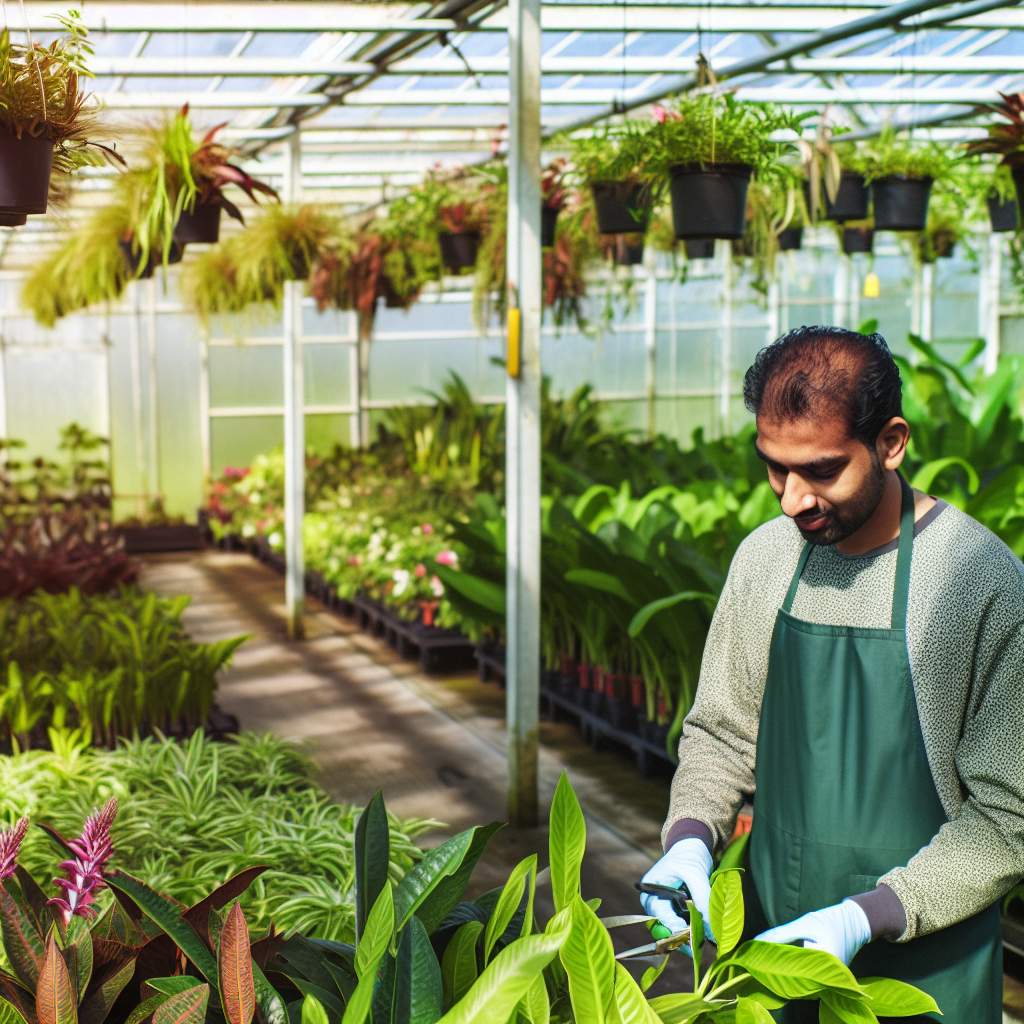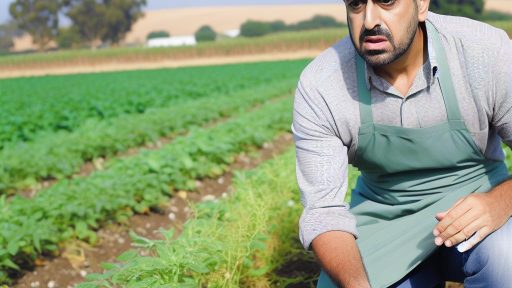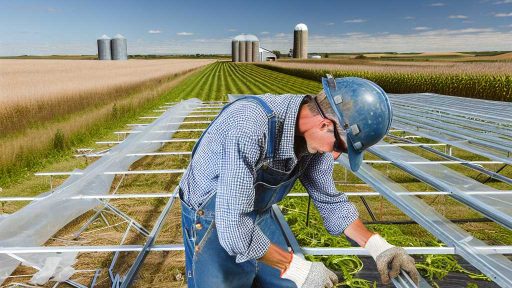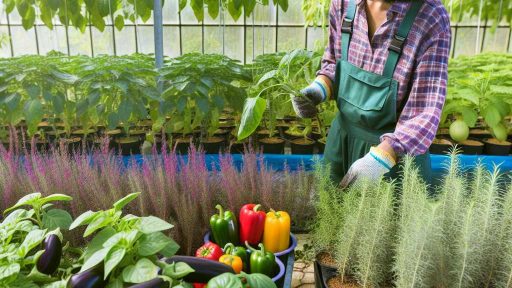Introduction to Greenhouse Cultivation
Greenhouse cultivation transforms the way we grow plants.
This method enhances plant growth through controlled environments.
Farmers enjoy numerous benefits from using greenhouses.
Whether for hydroponic or soil-based systems, greenhouses offer unique advantages.
Advantages of Greenhouse Farming
One major advantage is climate control.
Farmers can regulate temperature, humidity, and light levels.
This allows for year-round crop production.
Consequently, crops can thrive in non-traditional growing seasons.
Moreover, greenhouses protect plants from harsh weather conditions.
Pest and Disease Management
Another benefit is improved pest and disease management.
Greenhouses create a barrier against harmful insects and pathogens.
This reduces the need for chemical pesticides.
As a result, crops are healthier and safer for consumers.
Water Efficiency
Water usage is another critical aspect of greenhouse cultivation.
Greenhouses often employ advanced irrigation systems.
Transform Your Agribusiness
Unlock your farm's potential with expert advice tailored to your needs. Get actionable steps that drive real results.
Get StartedThis leads to more efficient water usage compared to traditional farming.
Farmers can ensure precise water application based on plant needs.
As such, they can conserve water resources effectively.
Quality and Yield Improvement
Furthermore, greenhouse cultivation enhances crop quality and yield.
Controlled conditions promote optimal growth and nutrient uptake.
Consequently, plants can develop superior flavor and nutritional value.
In addition, higher yields lead to increased profitability for farmers.
Importance in Sustainable Agriculture
Greenhouse farming plays a vital role in sustainable agriculture.
It reduces the environmental impact of traditional farming methods.
Furthermore, it supports local food systems by providing fresh produce.
Consumers increasingly demand locally sourced, organic options.
Greenhouse cultivation is a powerful tool for modern agriculture.
It combines efficiency, sustainability, and quality to meet growing food demands.
Overview of Hydroponic Systems
Understanding Hydroponics
Hydroponics is a method of growing plants without soil.
Instead, plants receive nutrients through a nutrient-rich water solution.
This method allows for precise control over nutrients and water.
Moreover, it can lead to faster plant growth compared to soil-based methods.
Types of Hydroponic Systems
Several types of hydroponic systems exist to meet various needs.
- Deep Water Culture (DWC) is simple and effective.
- Nutrient Film Technique (NFT) allows for a continuous flow of nutrients.
- Aeroponics suspends plants in air and mists their roots with nutrients.
- Wicking systems use capillary action to draw nutrients to plants.
These systems can be tailored for different crops and environments.
Applications in Greenhouses
Greenhouses enhance hydroponic systems by providing controlled environments.
They protect plants from adverse weather conditions.
Additionally, greenhouses can optimize light and temperature for growth.
Some greenhouse hydroponics focus on high-value crops like lettuce and herbs.
Benefits of Hydroponic Farming
Hydroponics offers numerous advantages for farmers and consumers.
Showcase Your Farming Business
Publish your professional farming services profile on our blog for a one-time fee of $200 and reach a dedicated audience of farmers and agribusiness owners.
Publish Your Profile- It uses less water than traditional farming methods.
- Hydroponics often results in higher yields per square foot.
- Farmers can grow crops year-round, regardless of climate.
- There is a reduced risk of soil-borne diseases.
These benefits make hydroponics an attractive option for modern agriculture.
Soil-Based Farming in Greenhouses: Techniques and Best Practices
Overview of Soil-Based Farming
Sole-based farming in greenhouses offers unique benefits.
It allows farmers to create optimal growing conditions.
Additionally, it enhances soil fertility and crop yield.
Choosing the Right Soil
Start by selecting high-quality soil for your greenhouse.
Consider using organic compost to improve soil structure.
Mix in perlite or vermiculite for better aeration.
Soil Preparation Techniques
Begin with thorough soil testing to determine pH levels.
Incorporate essential nutrients based on test results.
Prepare the soil by tilling it to a fine texture.
Ensure that the soil is free of weeds and debris.
Water Management Practices
Establish a consistent watering schedule for your crops.
Use drip irrigation to minimize water waste.
Consider employing moisture sensors to monitor soil conditions.
Pest and Disease Management
Implement integrated pest management techniques effectively.
Utilize natural predators to control pest populations.
Regularly inspect plants for early signs of disease.
Crop Rotation and Diversity
Practice crop rotation to enhance soil health.
This technique helps prevent pest buildup and diseases.
Diversify crops to promote nutrient balance in the soil.
Maintaining Soil Health
Regularly add organic matter to sustain soil fertility.
Consider cover crops to protect and enrich the soil during off-seasons.
Monitor soil structure and texture to ensure optimal conditions.
Maximizing Greenhouse Efficiency
Utilize proper spacing techniques to promote airflow among plants.
Consider using vertical gardening techniques to save space.
Regularly assess temperature and humidity levels for optimal growth.
You Might Also Like: Best Soil Conservation Techniques for Sustainable Farmland Use
Comparative Analysis: Hydroponic vs. Soil-Based Cultivation in Greenhouses
Introduction to Hydroponic Cultivation
Hydroponic cultivation uses nutrient-rich water to grow plants.
This system eliminates the need for soil altogether.
Plants receive nutrients directly through their roots.
Consequently, this method often results in faster plant growth.
Moreover, it requires less physical space compared to traditional farming.
Benefits of Hydroponics
- Hydroponics conserves water more efficiently than soil-based methods.
- It minimizes pest issues, reducing the need for pesticides.
- Crops can be grown year-round in controlled conditions.
- Hydroponic systems can be implemented in urban areas.
Challenges of Hydroponic Cultivation
Initial setup costs for hydroponic systems can be high.
Additionally, technical knowledge is essential to maintain these systems.
A malfunction can lead to crop failure within a narrow time frame.
Reliance on technology makes it vulnerable to power outages.
Introduction to Soil-Based Cultivation
Soil-based cultivation relies on traditional farming techniques.
Plants grow in organic soil, rich in nutrients and microorganisms.
This method has been used for centuries and is time-tested.
Benefits of Soil-Based Cultivation
- Soil enhances flavor and quality in many crops.
- Natural microbial life supports plant health and growth.
- Lower initial investments compared to hydroponic setups.
- Soil is widely available and generally easy to manage.
Challenges of Soil-Based Cultivation
This method depends heavily on weather conditions.
Showcase Your Farming Business
Publish your professional farming services profile on our blog for a one-time fee of $200 and reach a dedicated audience of farmers and agribusiness owners.
Publish Your ProfilePests and diseases can devastate crops grown in soil.
Additionally, soil degradation can occur over time without proper management.
Crop rotation and amendments are often necessary for sustainability.
Comparing Resource Use
Hydroponics often uses significantly less water than soil cultivation.
However, soil-based systems provide ecosystem benefits like carbon sequestration.
Furthermore, energy requirements for hydroponic systems can be substantial.
Market Considerations
Consumer preferences can differ based on farming methods.
Some customers prefer hydroponically grown produce for its cleanliness.
Others may favor the flavor of soil-grown products.
Assessing Cultivation Methods
Both cultivation methods have their unique advantages and challenges.
The choice depends on various factors, including resources and goals.
Investors must consider long-term sustainability and market demand.
Delve into the Subject: Bridging Precision Agriculture And Real Estate A New Approach To Crop Management
Environmental Control: Managing Temperature, Humidity, and Light
Importance of Temperature Control
Temperature plays a critical role in plant growth.
Maintaining optimal temperature enhances growth rates.
Too much heat can stress plants and reduce yields.
Conversely, low temperatures can stunt development.
Using heaters and coolers in greenhouses helps regulate temperature.
Strategies for Humidity Management
Humidity affects plant transpiration and nutrient uptake.
High humidity levels can lead to mold and pests.
Conversely, low humidity can cause dehydration.
Employing humidifiers and dehumidifiers are effective solutions.
Regularly monitoring humidity levels is essential for success.
Light Considerations for Optimal Growth
Plants depend on light for photosynthesis.
Different crops require varying light levels.
Natural sunlight varies, so supplemental grow lights are often necessary.
Choosing the right spectrum of light can boost growth significantly.
Adjusting light duration supports different growth stages.
Integration of Environmental Controls
Combining temperature, humidity, and light controls ensures optimal growth.
Automated systems can maintain consistent conditions around the clock.
Integrating sensors allows for real-time monitoring and adjustments.
This proactive approach reduces stress on the plants.
Ultimately, effective management leads to higher yields and healthier crops.
Discover More: Greenhouse Cultivation for Real Estate Investors

Nutrient Management Strategies: Tailoring Fertilization for Hydroponics and Soil
Understanding Nutrient Needs
Crops require essential nutrients for optimal growth.
Both hydroponic and soil-based systems benefit from proper nutrient management.
Identifying the specific nutritional needs of plants is crucial.
Optimizing Hydroponic Fertilization
In hydroponics, nutrient solutions play a vital role.
These solutions should contain balanced ratios of macronutrients and micronutrients.
Regular monitoring of pH and electrical conductivity is essential.
Showcase Your Farming Business
Publish your professional farming services profile on our blog for a one-time fee of $200 and reach a dedicated audience of farmers and agribusiness owners.
Publish Your ProfileThis ensures that plants absorb nutrients effectively.
Selecting the Right Fertilizers for Soil
Soil-based farming requires different fertilization strategies.
Understanding soil composition aids in selecting appropriate fertilizers.
Organic fertilizers enhance soil health and promote sustainability.
Moreover, synthetic fertilizers can provide targeted nutrient boosts.
Adjusting Nutrient Applications
Timing and frequency of fertilization impact plant growth.
Applying nutrients during critical growth stages promotes robust development.
Additionally, seasonal adjustments may enhance crop yield.
Integrating Organic Amendments
Organic amendments contribute significantly to nutrient management.
Composting enriches soil with essential nutrients and improves structure.
Mulching can also retain moisture and suppress weeds.
Using these practices fosters a healthy growing environment.
Monitoring Nutrient Levels
Regular testing of nutrient levels informs management decisions.
Soil tests help determine nutrient availability and deficiencies.
In hydroponics, analyzing nutrient solutions is equally important.
Adaptations should arise from monitoring results to ensure optimal growth.
Find Out More: Crop Disease Management for Protecting Agricultural Land Value
Pest and Disease Management: Integrated Approaches for Greenhouse Farming
Understanding Pest and Disease Challenges
Pests and diseases threaten greenhouse crops daily.
Effective management is crucial for optimal growth.
Consequently, farmers need to be proactive and informed.
Integrated Pest Management Strategies
Integrated Pest Management (IPM) combines different control methods.
This approach minimizes risks and maximizes effectiveness.
Farmers should monitor pest populations regularly.
To do this, they can use traps and visual inspections.
Identification of pests leads to better control decisions.
Cultural Controls
Cultural controls promote healthy plant growth.
For instance, crop rotation disrupts pest life cycles.
Diversity in crops reduces pest establishment and spread.
Additionally, proper sanitation prevents disease spread.
Biological Controls
Biological controls utilize natural predators and parasites.
For example, ladybugs can manage aphid populations.
Farmers can purchase beneficial insects from suppliers.
Moreover, introducing nematodes helps control soil-borne pests.
Chemical Controls
Chemical controls should be used judiciously.
Farmers need to select targeted pesticides to limit harm.
Always follow application guidelines for safety.
Furthermore, consider using organic options where possible.
Monitoring and Record Keeping
Regular monitoring is essential for effective pest management.
Farmers should keep detailed records of pest and disease incidences.
Such records help in evaluating the effectiveness of strategies.
Showcase Your Farming Business
Publish your professional farming services profile on our blog for a one-time fee of $200 and reach a dedicated audience of farmers and agribusiness owners.
Publish Your ProfileDocumentation also aids in predicting future pest outbreaks.
Education and Training
Education plays a vital role in pest management success.
Farmers should participate in workshops and training sessions.
Networking with other farmers fosters knowledge sharing.
Access to resources and experts enhances understanding.
Implications of Integrated Pest Management Strategies
By employing integrated pest management strategies, farmers can effectively manage pests and diseases in their greenhouses.
Knowledge, monitoring, and proactive measures contribute to healthy crops and sustainable farming practices.
As a result, farmers can achieve high yields and minimize environmental impact.
Market Trends and Economic Viability of Greenhouse Hydroponic and Soil Production
Current Market Trends
The demand for greenhouse cultivation is on the rise.
Consumers increasingly prefer locally grown produce.
This trend reflects a growing emphasis on sustainability.
Moreover, urban areas are seeing a spike in hydroponic farms.
Greenhouses facilitate year-round crop production.
Thus, they fulfill market needs regardless of seasonality.
Furthermore, technological advancements boost efficiency in operations.
Economic Viability of Hydroponics
Hydroponics offers substantial benefits for farmers.
It reduces the need for soil, making land use efficient.
Crops grow faster in hydroponic setups compared to traditional farming.
This practice results in higher yields per square foot.
Additionally, water usage is significantly lower in hydroponics.
Many farmers report reduced labor costs with hydroponic systems.
Thus, it can lead to higher profit margins for producers.
Benefits of Soil-Based Farming
Soil-based farming remains relevant despite technological advancements.
Soil provides natural nutrients essential for crop growth.
This method fosters microbiological diversity in the ecosystem.
Moreover, it can benefit from organic practices that enhance soil health.
Farmers can sell organic produce at premium prices.
Therefore, it remains economically viable in specific markets.
Investment Opportunities
Investing in greenhouse technology opens new avenues.
Government grants encourage innovation in sustainable practices.
Private investors are increasingly interested in agritech companies.
In addition, partnerships with local businesses can create win-win situations.
Further, agribusiness incubators support startups in the sector.
As a result, opportunities for growth are abundant.
Entrepreneurs should consider both hydroponic and soil-based methods.
Challenges to Overcome
Despite the potential, challenges remain across the industry.
Initial setup costs for greenhouses can be significant.
Moreover, maximizing crop yields requires specific knowledge.
Farmers face competition from conventional agriculture.
Additionally, pests and diseases can impact yields unexpectedly.
Showcase Your Farming Business
Publish your professional farming services profile on our blog for a one-time fee of $200 and reach a dedicated audience of farmers and agribusiness owners.
Publish Your ProfileThus, ongoing education and support systems are crucial.
Farmers must stay adaptable to changes in the market.
Additional Resources
Comparative environmental footprints of lettuce supplied by …
Hydroponics: current trends in sustainable crop production – PMC




